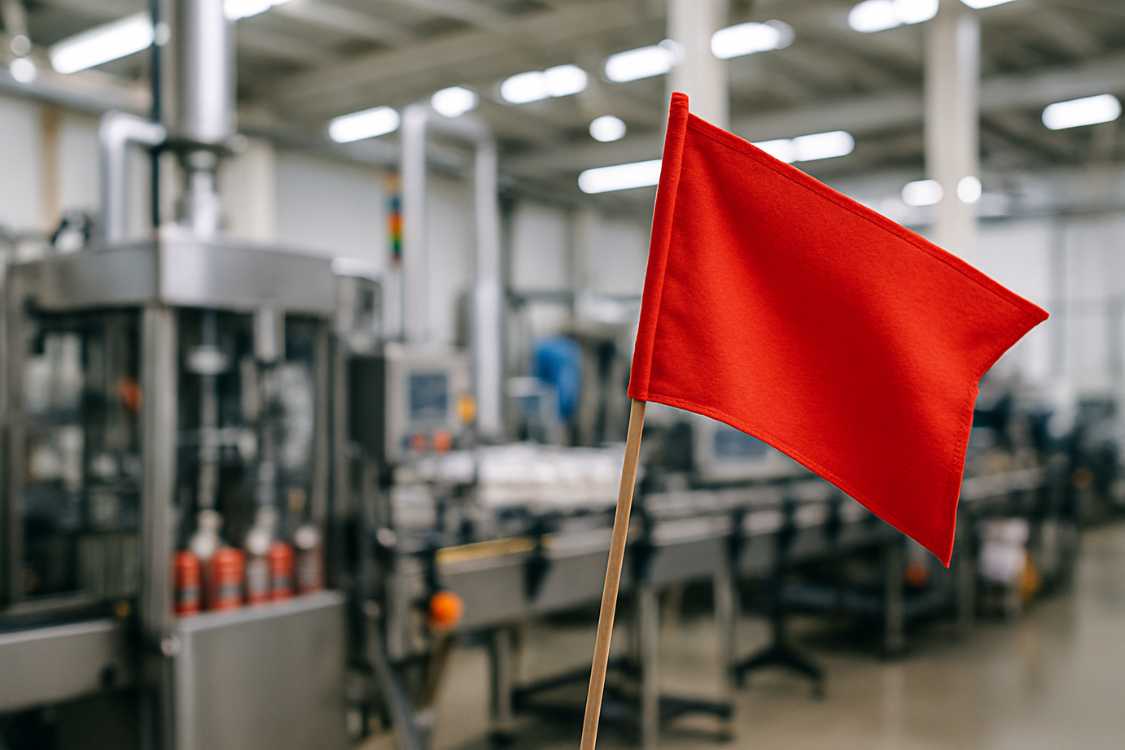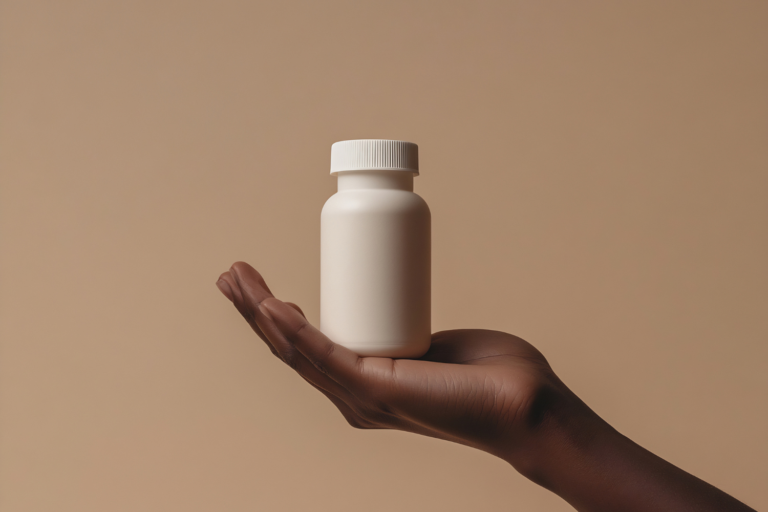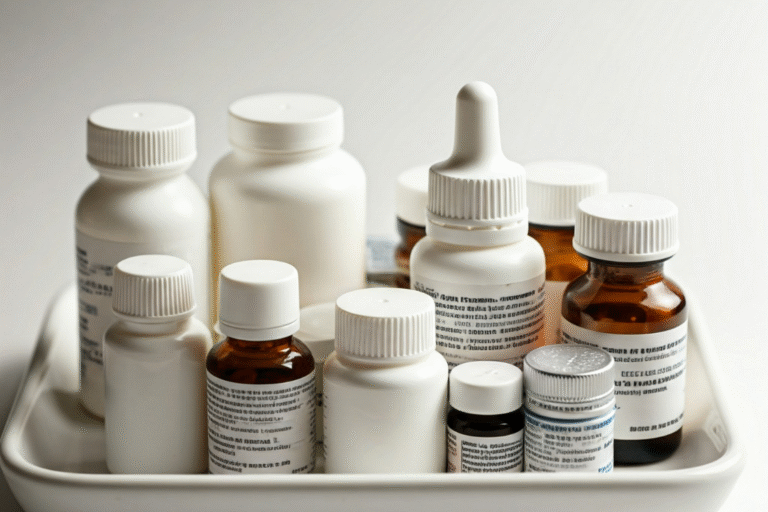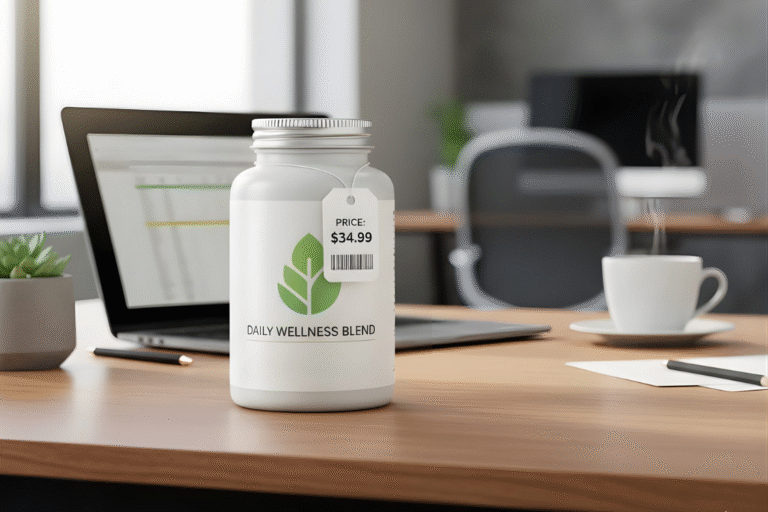What would you do if your supplement partner failed an FDA inspection and your product ended up on a recall list? That risk becomes real when manufacturers cut corners on Good Manufacturing Practices (GMP). Spotting GMP red flags during a facility tour isn’t just a box to check. It’s one of the few opportunities you have to identify serious issues before entering into a contract.
From unclean production areas to missing quality control protocols, what you observe or fail to notice can directly affect your brand’s regulatory compliance, product safety, and long-term credibility. These issues can cause delays, harm customer trust, and even lead to forced product recalls.
Learning how to identify risks on-site gives you an edge when choosing a partner. Manufacturers with strong quality assurance systems, clear standard operating procedures, and a proven track record of compliance are far more likely to support your brand’s growth. This guide explains what to look for during a facility tour and how to protect your business from GMP violations that could lead to warning letters, legal issues, or supply chain disruptions.
What Are GMP Red Flags?
GMP red flags are warning signs that a supplement manufacturer may not be following required safety or quality standards. These issues, if left unaddressed, can put your brand, your customers, and your business at serious risk.
Some problems are easy to spot, but others may be buried in documentation or become apparent only during formal GMP inspections. Common red flags include unclear standard operating procedures, poor recordkeeping, or facilities that fall short of basic cleanliness and quality control expectations. These are not just internal concerns. If identified during FDA inspections, they can result in warning letters, product recalls, or even contract termination.
Even one missed detail could trigger a GMP violation that disrupts your production process, damages your brand’s credibility, or threatens public safety. Understanding how to identify and address red flags early gives you greater control over your operations, helps you ensure compliance, and reduces the risk of costly delays or legal complications.

Key GMP Red Flags to Identify During Facility Tours
Facility tours give you a close-up look at how a manufacturer actually operates, going beyond what’s written in a brochure or sales pitch. This step is essential for conducting proper evaluations and verifying that the company is aligned with regulatory expectations. Use this time to examine their process, ask detailed questions, and observe how they manage compliance in real time.
Lack of Transparency
Trust begins with open communication. If a company hesitates to show certain production areas or avoids giving clear answers, that’s a sign worth investigating. When parts of the facility are off-limits without a valid reason, it may suggest the manufacturer is trying to hide non-compliance issues or internal quality control problems. A reliable company should have no problem walking you through key operations, especially before a contract is signed.
Similarly, if staff give hesitant or unclear answers to questions about quality assurance, safety protocols, or regulatory compliance, it could reveal a lack of preparedness or gaps in internal procedures. Following GMP guidance from regulators is not optional—it’s a fundamental part of running a compliant operation. A manufacturer with a proven track record should explain their processes clearly and confidently, and provide examples of how they stay in line with regulatory requirements.
Poor Facility Conditions
Cleanliness and equipment maintenance play a major role in product safety, and a simple walkthrough can reveal whether these areas are taken seriously. Cluttered workspaces, signs of pests, or visible grime in production areas aren’t just unpleasant. They raise concerns about contamination, oversight, and public safety. These raise concerns about contamination and oversight. Such conditions could increase the chance of mix-ups and make it more difficult to prevent contamination.
You’ll also want to take a close look at the condition of the equipment. Rust, outdated machinery, or signs of neglect can point to serious maintenance issues. In a study of equipment maintenance, it was found that when equipment isn’t properly maintained, there is a higher chance of incorrect dosing or cross-contamination. Any of these issues could result in failed FDA inspections or costly product recalls, which can be damaging across the food and pharmaceutical industries. This is a great example of why visual inspection remains a critical part of assessing facility integrity.
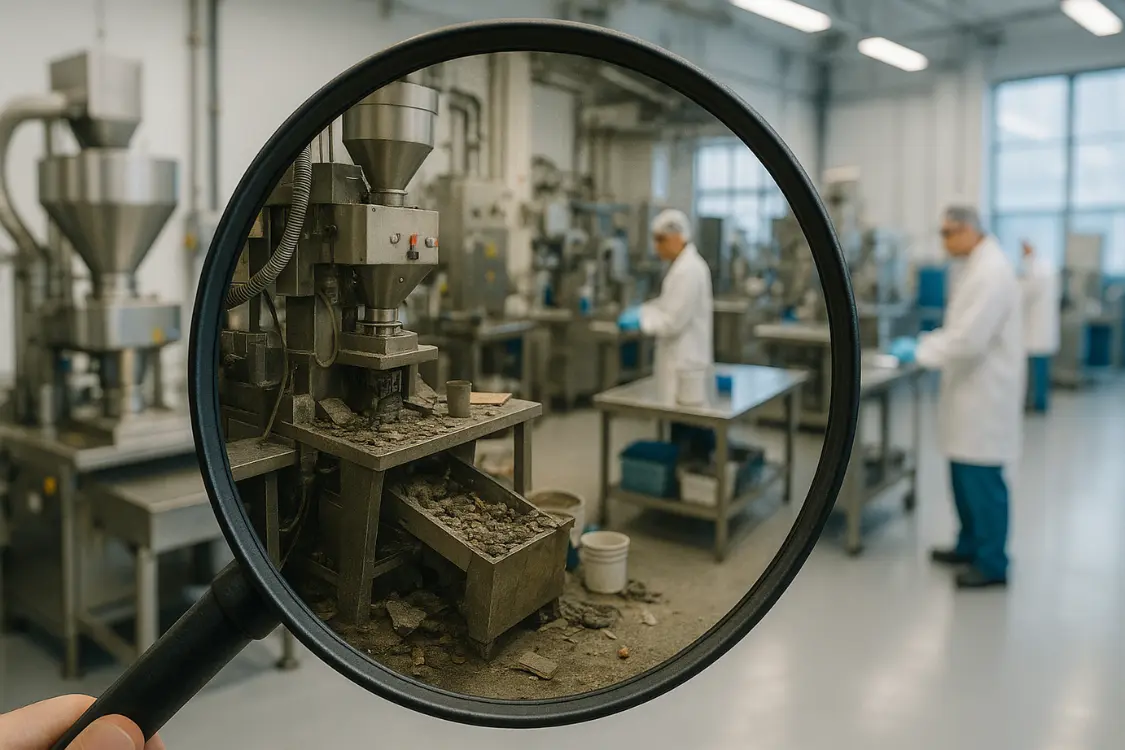
Inadequate Quality Control Measures
A manufacturer’s ability to maintain product consistency and safety depends on the strength of their quality control system. If that system is weak, your brand takes on the risk. While FDA registration is not legally required for dietary supplement manufacturers under the Federal Food, Drug, and Cosmetic Act, many companies choose to register voluntarily to demonstrate their commitment to regulatory compliance and public transparency. It’s also important to confirm that the company has undergone third-party audits and maintains clear, up-to-date records related to regulatory affairs.
Their documentation should reflect current operating procedures and be backed by a functional quality management system with active oversight. This structure helps ensure consistency and allows for early detection of potential issues.
Ask how the manufacturer conducts product testing and what protocols are followed during and after the production process. Regular testing is essential to confirm that the product meets label claims, safety standards, and relevant specifications for food or pharmaceuticals. Without a structured approach to quality control, preventive actions, and continuous improvement, it’s difficult to identify problems before they reach the market or affect public safety.
Non-Compliance with Documentation Standards
Accurate records are a critical part of GMP compliance. They allow manufacturers to track materials, follow correct procedures, and show proof of compliance during inspections. Every batch should include detailed documentation of production steps, test results, and raw material sources. Incomplete records are a red flag that could expose your company to risk during FDA or third-party audits.
You should also request access to training logs and SOP reviews. These records show how frequently staff are trained, what procedures are in place to guide their daily work, and how well the company keeps up with evolving regulatory guidance. Documentation should be reviewed regularly and updated as needed to reflect any changes in the course of production, regulations, or safety expectations.
Unethical Business Practices
Not all warning signs are visible on the production floor. Sometimes, concerns arise from the way a company conducts business or negotiates deals. For example, if a manufacturer offers extremely low pricing or promises an unusually fast turnaround without clear reasoning, ask how they plan to deliver those results. Cutting corners may lower costs, but it can compromise product safety or compliance.
Also be cautious about how the company handles contracts. Some manufacturers attempt to include terms that grant them ownership over your formulations or branding. This is especially risky in private-label agreements. Make sure your contract clearly outlines IP ownership, pricing terms such as guaranteed maximum price, and your rights as a brand owner. A transparent partner will respect your business and avoid overreaching clauses.
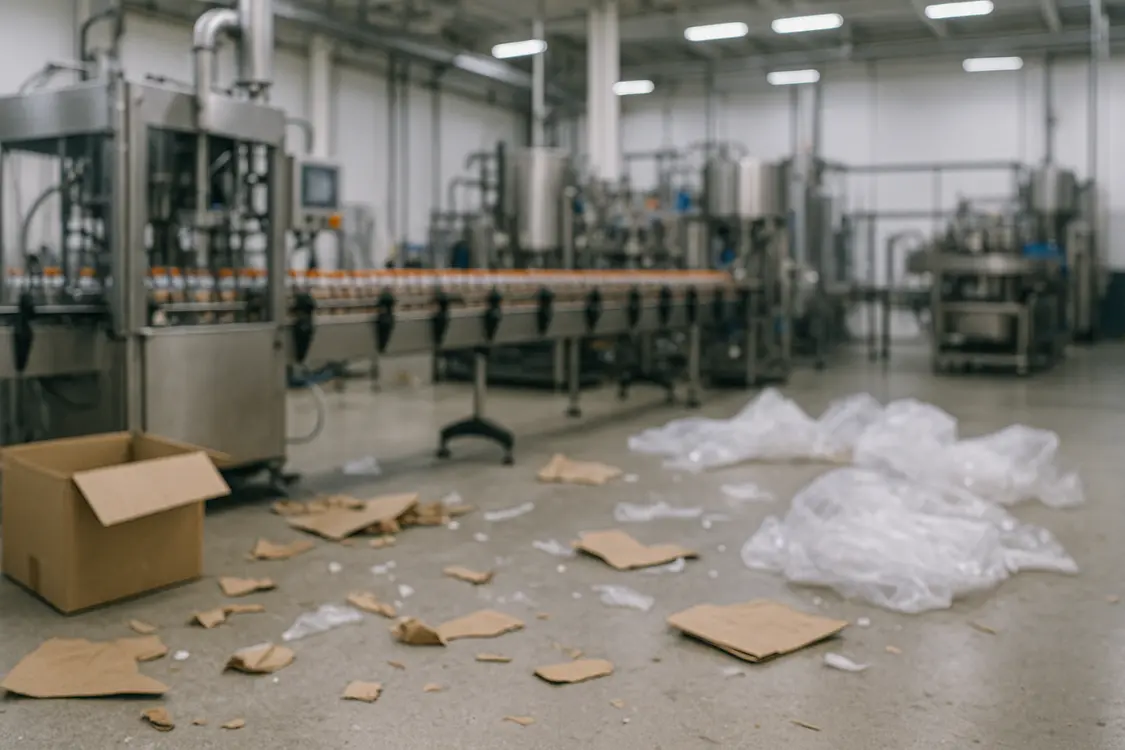
How to Prepare for a Facility Tour
Preparation is essential to getting value from a facility visit. Touring a manufacturer without a clear plan makes it harder to evaluate their operations and identify red flags. Conducting a thoughtful review ahead of time ensures you ask the right questions and gather insights that will inform your final decision.
Develop a Checklist
Creating a detailed checklist before your facility tour helps you stay focused on what matters most. It ensures you’re evaluating each manufacturer consistently while aligning your review with your product requirements, regulatory compliance goals, and quality management system expectations. A strong checklist also makes it easier to identify risks, compare performance, and gather insights that support confident decision-making.
Here are key items to include:
- Current GMP inspection history and recent audit results
- Documentation of standard operating procedures (SOPs) and when they were last reviewed
- Overview of the manufacturer’s corrective and preventive actions system
- Evidence of a structured quality control and quality assurance process
- Availability and accuracy of regulatory affairs documentation
- Staff training frequency and recordkeeping procedures
- Facility’s preparedness for FDA inspections or unannounced inspections
- Review of the production flow and how they prevent contamination in production areas
- Verification of raw materials sourcing and storage practices
- Clear explanation of contracts, including any pricing terms like a guaranteed maximum price
A thorough checklist keeps your evaluation aligned with GMP guidance and helps ensure your manufacturing partner can meet regulatory requirements and support your brand’s long-term growth.

Engage with Staff
Staff knowledge and attitude are leading indicators of a manufacturer’s commitment to compliance. Speak with those involved in quality assurance, production, and regulatory affairs. Ask about their training schedule, how they implement corrective and preventive actions, and how they respond to changes in regulations. Their answers should reflect hands-on experience, not just textbook knowledge. This interaction is a great example of how human insight often reveals more than paperwork alone.
Request Documentation
Requesting documentation is a key part of verifying that a manufacturer follows Good Manufacturing Practices (GMP) and meets all necessary regulatory requirements. The paperwork should not only match what you observe in the facility but also demonstrate a commitment to regulatory compliance, product safety, and operational accuracy. Outdated or incomplete documents are often early signs of non-compliance or weak internal controls.
Make sure to request and review the following:
- Up-to-date FDA registration and any recent inspection or warning letter history
- Results from third-party audits and internal GMP inspections
- Copies of current standard operating procedures (SOPs) and records of when they were last reviewed
- Documentation of the company’s quality management system, including quality control protocols
- Evidence of corrective and preventive actions taken in response to past issues
- Staff training logs that are complete, dated, and aligned with current procedures
- Documentation related to regulatory affairs, including compliance with pharmaceutical or food manufacturing standards
- Material traceability logs to verify the sourcing and handling of raw materials
- Copies of any relevant contracts that define scope, responsibilities, and pricing terms, such as a guaranteed maximum price
Having this documentation on hand gives you better visibility into the company’s ability to ensure compliance, follow guidance from regulators, and maintain high standards across the production process.
Post-Tour Evaluation
Once the tour is complete, take time to review what you saw and compare it against your expectations. First impressions matter, but a detailed review ensures you’re making the right decision.
Analyze Findings
Compare your notes with the checklist you created before the visit. Identify gaps between what was promised and what you observed. Pay special attention to how the facility handles product safety, quality assurance, and regulatory compliance.
Make an Informed Decision
A clean, modern facility isn’t enough. The real test is whether the manufacturer can meet your expectations over time. Ask yourself if they’re prepared for FDA inspections, unannounced inspections, and the demands of a growing brand. Do they have a proven track record of following regulations and delivering consistent results?
Choosing the right partner helps ensure smoother operations, easier access to reliable production, and fewer compliance risks in the long run.
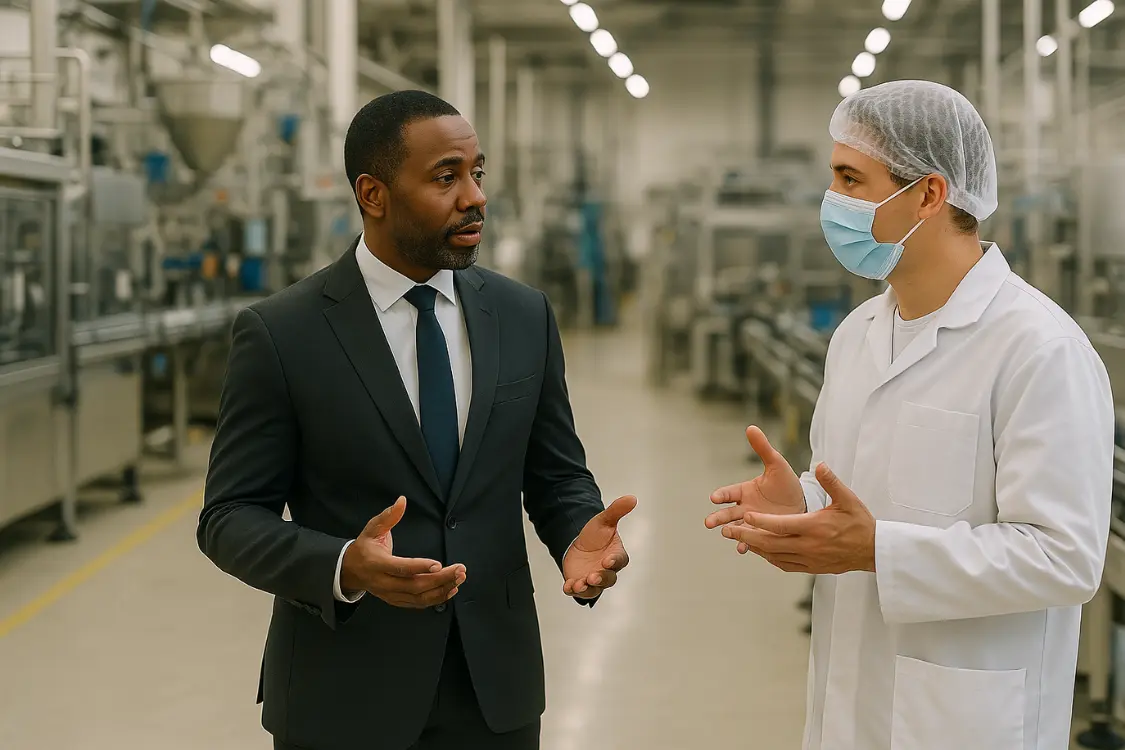
Ensuring GMP Compliance for Your Brand’s Success
Touring a supplement manufacturing facility gives you a clear, hands-on view of how seriously a company handles quality, safety, and regulatory compliance. It’s your opportunity to confirm that their operations match their promises, not just in writing but in actual practice.
Spotting GMP red flags such as incomplete documentation, missing standard operating procedures, or signs of non-compliance can help you avoid costly problems like recalls, supply delays, or FDA warning letters. What you observe during the visit should align with the records, procedures, and terms outlined in your contract.
Taking time to conduct a thorough evaluation before you commit helps ensure the manufacturer can meet FDA standards, maintain product safety, and grow alongside your brand. A company that follows good manufacturing practices can be a trusted partner in your long-term success.
Frequently Asked Questions
What are common GMP violations to look for during a facility tour?
Look for cleanliness issues, incomplete records, poor training logs, and missing quality control protocols.
How can I verify a manufacturer’s GMP compliance?
Ask for FDA registration, third-party audit reports, and up-to-date GMP documentation.
What documentation should a GMP-compliant manufacturer provide?
They should provide standard operating procedures, batch records, training logs, and corrective and preventive action reports.
Why is it important to conduct a facility tour before partnering with a manufacturer?
A tour helps you identify red flags, assess real-time operations, and verify if they follow good manufacturing practices.
How often should I audit my supplement manufacturer for GMP compliance?
Conduct audits at least once a year or after any major change in their facility, process, or staff.
References
- Code of Federal Regulations. (n.d.). § 111.455 What requirements apply to holding components, dietary supplements, packaging, and labels? U.S. Government Publishing Office. https://www.ecfr.gov/current/title-21/chapter-I/subchapter-B/part-111/subpart-M/section-111.455
- Food and Drug Administration. (n.d.). Inspection guides. U.S. Department of Health and Human Services. https://www.fda.gov/inspections-compliance-enforcement-and-criminal-investigations/inspection-references/inspection-guides
- Food and Drug Administration. (n.d.). Questions and answers on dietary supplements. U.S. Department of Health and Human Services. https://www.fda.gov/food/information-consumers-using-dietary-supplements/questions-and-answers-dietary-supplements
- Food and Drug Administration. (n.d.). Recalls, market withdrawals, & safety alerts. U.S. Department of Health and Human Services. https://www.fda.gov/safety/recalls-market-withdrawals-safety-alerts
- Office of Dietary Supplements. (n.d.). Dietary supplements: What you need to know. Fact sheet for consumers. National Institutes of Health. https://ods.od.nih.gov/factsheets/WYNTK-Consumer/
